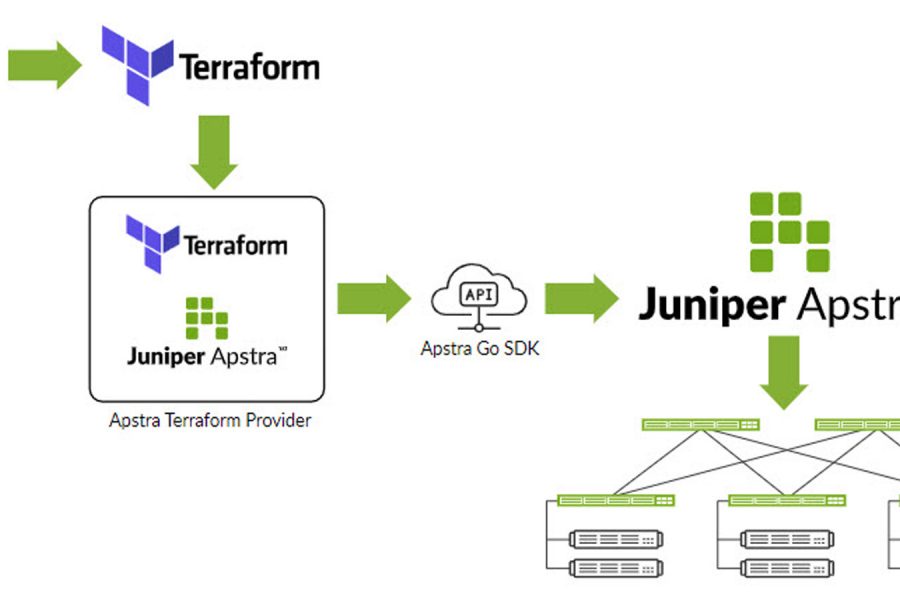Machines run machines in much of our everyday lives and increasingly on our networks. Think of autonomous vehicles: the system understands the intent of a driver (i.e., to adjust vehicle speed to maintain a safe distance from vehicles ahead), pulls in data from various subsystems across the car (such as speed, distance and weather conditions) and then makes the necessary adjustments to achieve the required goal.
Data center operations must work in a very similar fashion. With continuous automation, validation and self-driving network operations, IT can focus on strategic issues and avoid spending time on network configuration and troubleshooting. However, implementing this vision is no small task given the multitude of states across a diverse set of devices, protocols and interfaces. Plus, there are many outside influences that affect user traffic, network conditions and security.
We founded Apstra six years ago to solve this problem.
The objective was to create a software solution to abstract the complexity and provide powerful automation and validation capabilities for data center networks. To automate the data center, we knew we had to take a distributed systems approach, pulling insight from the infrastructure, fabric, applications and other key systems. As few environments are single vendor, we designed our software from the ground up for multivendor environments. We fundamentally believe that the best innovation comes from the many, and we wanted our customers to have the flexibility to use any vendor without the lock-in that has been the status quo in our industry for far too long.
Apstra’s approach has delivered substantial and quantifiable benefits to our diverse set of customers, from leading enterprises like Accenture, Bloomberg and Yahoo Japan to two of the largest global service providers to customers in the mid-market. We have enabled them to find “needle in haystack problems,” like a few mis-cabled ports across 10,000 devices and bad fiber links that were debilitating the data center. Fast and accurate root-cause identification and remediation is our specialty and essential to saving customers time and money while ensuring mission-critical infrastructures operate as intended.
Customers have played a big part in our journey, guiding us every step of the way. After experiencing Apstra working side-by-side with Juniper and seeing the benefits of best-in-breed networking and validated automation, our customers helped us realize that combining forces is a natural and ideal path forward. This led us to today’s exciting announcement of Juniper’s intent to acquire Apstra, where I will be serving as Chief Data Center Scientist.
Combining Apstra with Juniper is right on so many levels. First, there is a complete match of mission and vision – i.e., bringing simplicity to networking operations through AI-driven intent-based networking and automated continuous validation. Juniper has well-earned their reputation on this front, with world-class software engineering that solves the difficult problems of scaling networks with performance, reliability and security. Their solutions run much of the internet backbone, keeping our businesses, governments and schools going, even as traffic jumped in the past year — an amazing accomplishment for our industry for which we all should feel a strong sense of pride and appreciation. Furthermore, they are leading the next wave of AI-driven networking, which complements an intent-based approach with even more proactive insight, automation and self-driving network actions.
Secondly, Juniper is unwavering in its commitment to openness and multi-vendor interoperability with its highly programmable flagship operating system, Junos OS, in leading key technology standards, like EVPN, and delivering a suite of switching and routing solutions to the SONiC ecosystem.
Together, on day one, we will deliver unrivaled intent-based networking and automated continuous validation, empowering simplified operations on top of the leading data center portfolio, which is differentiated for its range of fabric options, rich telemetry and open programmability. Plus, we have an accelerated path toward AI-driven data center operations, further enriching our goal of proactive automation and self-driving network functions.
For all of these reasons, I’m thrilled to be joining Juniper, where together we will continue to solve the toughest customer challenges with engineering simplicity. It is time to level the playing field for the enterprise data center and eliminate false tradeoffs. You can have manageability and flexibility as well as performance and scale – all without the risk of proprietary lock-in. With Apstra combining forces with Juniper, this is more than a shared vision. It is a customer-proven reality where together we will build upon our success to deliver unparalleled technology and innovation to the networking industry. These are exciting times for data center operations, and I am grateful for the opportunity to work with a world-class visionary team as we create the future.
Forward-Looking Statements
This blog contains forward-looking statements within the meaning of applicable securities laws. All statements, other than statements of historical fact, could be deemed forward-looking statements. Statements in this blog concerning Juniper Networks’ business, strategy and focus; our agreement to acquire Apstra; the results, savings and improvements made possible by Apstra’s technology, including as integrated with Juniper Networks’ solutions; and our overall future prospects are forward-looking statements that involve a number of uncertainties and risks. Actual results or events could differ materially from those anticipated in those forward-looking statements as a result of several factors, including, without limitation, our ability to close the contemplated acquisition in a timely basis or at all, our ability to integrate the acquired company and its technology, potential benefits of the transaction to Juniper Networks and our customers, the effectiveness of Apstra’s technology, and other factors listed in our most recent report on Form 10-Q filed with the Securities and Exchange Commission. All statements made in this blog are made only as of the date of this blog. Juniper Networks undertakes no obligation to update the information in this blog in the event facts or circumstances subsequently change after the date of this blog.


